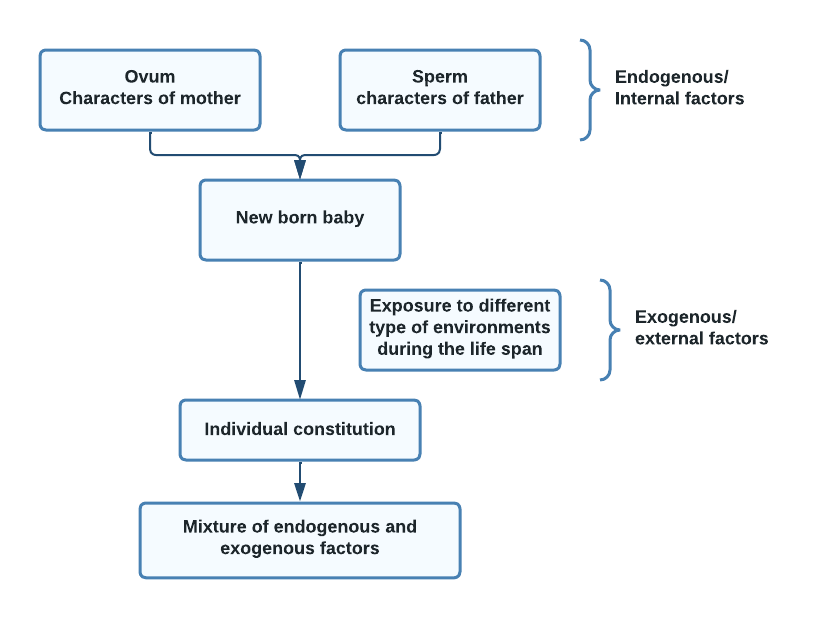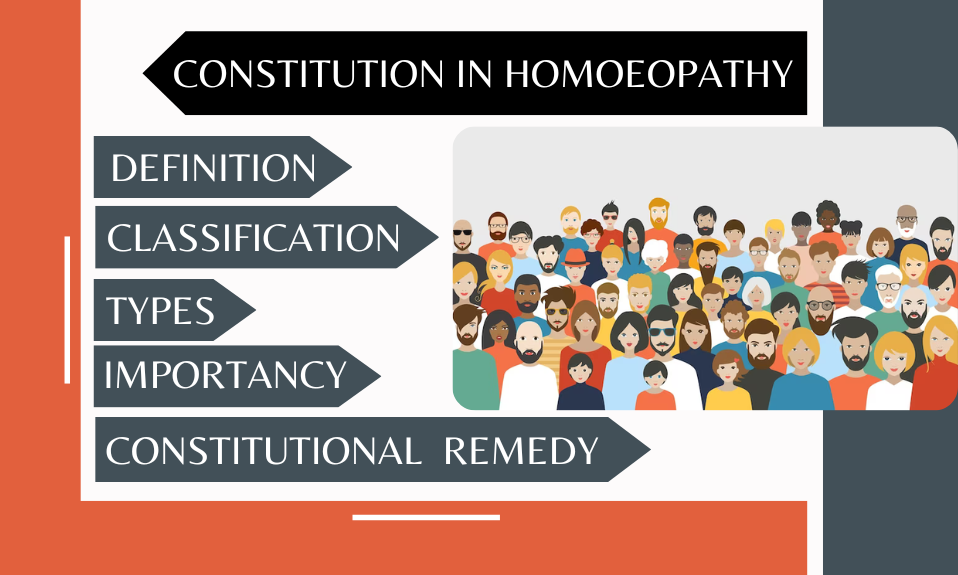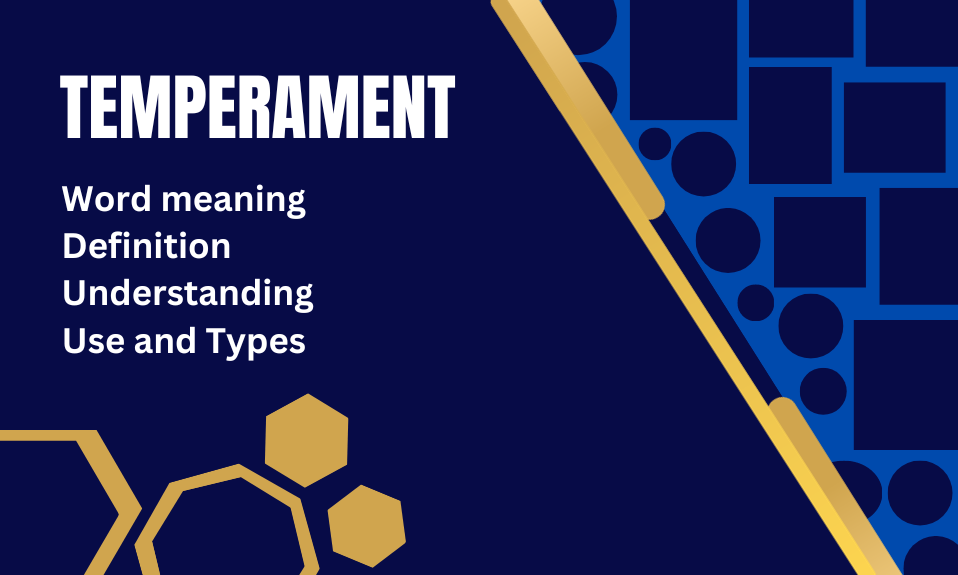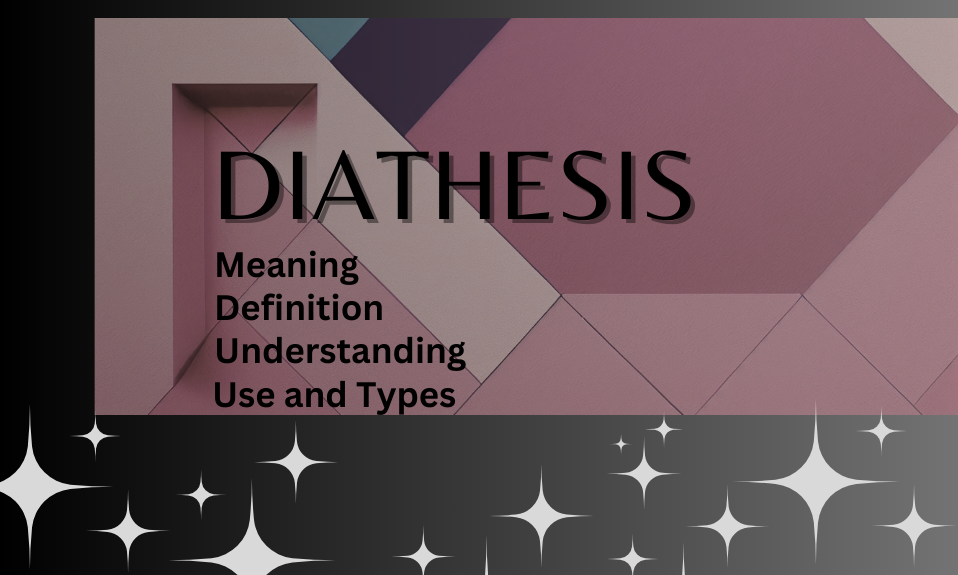Definition of Constitution in Homoeopathy :
“constitution is sum total or aggregation of very important information derived from patient and which are developed from genetic and environmental information.”
View of stalwarts on constitution :
- S. Close “aggregate of hereditary characters, influenced more or less by the environment which determines the individual reaction, successful or unsuccessful, to the stress of environment. ”
- Dr. J.T. Kent “physical constitution is the external disorder following disorder in the man, the vital force.”
- Dr. Small “constitution is the codification or influence that any class organs or humours may exert when it predominates in the system”
- Dr. N.C. “physical constitution is the soil on which grow the idiosyncrasies, diathesis, susceptibilities, dyscracia etc.”
- *NOTE= Dr. Hahnemann never used the term constitution, but he used German term, “beschaffenheit” (make up) in aphorism-5 (§-5) which usually translated into English as the word, “constitution”.
- Schaffen means “to do, to make”
- Beschaffen means “to procure, make something available.”

Importance of constitution :
- Treatment of disease
- Finding similimum remedy
- Maintenance of health and preventive prophylaxis
- Proving of medicine and building materia medica.
Classification of Constitution :
- Dr. Von Grauvogl’s classification
- Dr. Vannier’s classification
- Ernst kretchner classification
- Rademancher constitution
- Galenic constitution
- Hippocratic concept of constitution
- Chinese concept
- Ayurvedic concept/ Indian concept
- Bazin’s concept
- Dr. N. Pande
Grauvogl’s Classification
Grauvogl was German homoeopath who classified constitution ,in different types , in the year, 1870.
It is the most accepted classification of constitution in homoeopaths.
Dr. Clarke explained about these Grauvogl’s constitution in his book “Constitutional remedies”
The classification was based on different biochemical contents of the body.
According to him, the living organism is made up of oxygen , carbon, nitrogen and hydrogen.
And the access and deficiency of these elements in the tissue results in the development of different constitution.
He says “for every organ and tissue breaths and if the lungs are gateways and the blood is carrier it is the tissues which are the ultimate recipients of the oxygen that is inbreathed.”
Grauvogl classified constitution into following three parts:
- carbo nitrogenoid constitution
- oxygenoid constitution
- 3 hydrogenoid constitution
Carbo Nitrogenoid Constitution
- It results from insufficiency or inadequacy of the oxygenation.
- It is characterized by excess of carbon and nitrogen , insufficient oxygenation leads to deficiency disorder and perverted nutrition.
- In these type of constitution diseases are developed mainly due to retardation and malnutrition.
- Tissues doesn’t absorb sufficient oxygen or nutrition (defective assimilation of nutrition).
- Affected parts: heart, lung, liver, spleen, kidney.
Sign and symptoms :
- Physical appearance: marked obesity is seen which is followed by emaciation in latter stage of life.
- Skin: dirty, unhealthy, with very fetid perspiration.
- Nails: brittle, dry, usually longitudinally striated.
- Mental: hypochondriac, irritable and impatient patient.
- Mind(nervous system): vertigo, ataxia, somnolence, hypochondriacs , epilepsy , yawning etc.
- Heart: rapid pulse(tachycardia)
- Respiratory: breathlessness, respiratory disorder, frequent and shallow respiration.
- Git: constipation, diarrhoea , flatulence
- Extremities: swelling of joint, gout.
- Excretory: urinary trouble
- Modalities:
- <by excessive eating,resting and sexual excess.
- >by rest, sufficient sleep with balance diet.
- Diminished quantity of water in tissuse
- Remedies: Rhus tox, hepar sulph, phosphorus, lycopodium etc.
Carbo nitrogenoid constitution is closely resembles with hahnemann’s “psora”.
Oxygenoid Constitution
- It is characterized by an excess of oxygen or exaggerated influence of oxygen on the organism.
- Excessive oxygen in the system results into the breakage of hydrocarbons and nitrogen.
- This leads to destruction and degeneration of tissue and bones.
- Symptoms of the patient improve in nitrogen and carbon rich environment.
- Affected parts: Destructive complaints involving genital organs and diseases of the central nervous system, also have high tissue affinity , body is prone to ulcers and self-destruction.
Sign and symptoms :
- Physical appearance: Excessively thin patient, cachexia, scrofulous diathesis(enlarged glands and lymph-nodes ), plethoric person(full of body fluids)
- Skin: prone to ulcers and eruption.
- Nails: long with white spots.
- Mental: Oxygenoids are generally nervous individuals with great physical and mental activity.
- Appetite: vigorous appetite even in illness,
- Modalities:
- < by moving from dry atmosphere to humid atmosphere (dry to damp weather) , at seashore or at low aptitude , empty stomach.
- > by feels better in rains or cold weather , snowfall , by taking rest and taking food.
- They feels strong animal heat after meals and feeble in the intervals.
- Remedies: kali-iod. , kreosotum , mercury , petroleum etc.
These constitution is closely resemble with “Syphilis” of Hahnemann.
Hydrogenoid Constitution
- This constitution is characterized by Excessive hydrogen.
- It leads to excess water retention in blood and tissue.
- Affected parts: are prone to dropsy and anasarca and suffer from diseases of tissue growth of the benign type.
Sign and symptoms :
- Physical appearance: obesity with short and round limbs , body looks as if swollen.
- Skin: wet due to excessive sweating.
- Mental: indolent , apathetic (with no concern , indifference) , fatigue and slow to react.
- GIT: slow intake of nutrients
- Excretory: renal troubles.
- Patient looks as if having no life.
- Symptoms shows periodicity and paroxysmal couse.
- Modalities:
- < by bathing , by eating sea food or aquatic animals like fish, prawns etc. , the vegetables which grow near the water or which have the high content of water.
- >In open air , warmth , exposure to dry weather.
- Remedies: Ars. , Dulcamara, Nat-sulph. , Nitricum-acidum, Phytolacca decandra, Rhus tox., Thuja occidentalis , Digitalis purpurea and Apocynum cannabinum.
This constitution is represented by the “ sycotic ” miasm of Dr. Hahnemann.
But it is not necessary that all the sycotic remedies are hydrogenoid type.
Dr. Vannier’s classification
His classification was based on the predominance of the chemical elements in the body.
It is focused on physical appearance, teeth, arm-angle, psychological and affected organ.
He has classified it into three types:
- carbonic
- phosphoric
- fluoric
Carbonic :
- The carbonic type of constitutions correspond to the vitality, originates from the Psora and affect the epithelium.
- Mental : person is pride person , They are orderly , undemonstrative, responsible and capable , people are mentally and physically upright.
- Teeth: having square, white, regular teeth.
- Angle: Slight acute angle between the forearm and the upper arm, when stretched.
- Miasm: They are psoric and prone to arthritis and eczema.
Phosphoric :
- The phosphoric type correspond to the lack of vitality, originates from the tubercular miasm and affect serous membranes.
- These are people having scrofulous or tubercular diathesis.
- Menal: They dislike hard work but like orderliness and fastidious people.
- Physical appearance: Tall, thin, delicate and easily tired
- Teeth: have long, yellow but well-fitted teeth.
- Angle: When the arm is stretched, it forms a perfect straight line from the shoulder to the fingertips.
- People are susceptible to diseases of the chest and lungs including tuberculosis.
- Miasm: They are sycotic person.
Fluoric :
- The fluoric constitution has instability and originates from the syphilitic miasm and affect the elastic tissues.
- Mental: suicidal tendencies , They are capable of heroism, sanctity or wickedness.
- Physical appearance: Body formation is unbalanced and irregular with
- Angle: outstretched limbs forming an obtuse angle with the elbow or knee.
- Teeth: are irregular and ill-fitted.
- The person is untidy, cunning and unreliable.
- They are prone to diseases of the nervous system, dislocation of joints.
- Miasm: Syphilitic miasm
Ernst kretchner classification :
It is based on physical appearance and strength.
It is classified in the following three types.
- Athletic : refers to skeleton physique
- Asthenic : refers to frail, linear physique
- Pyknic : refers to plump physique
Rademancher constitution :
Also called as Rademacher’s Threefold Division.
He has classified constitution on the bases of epidemic involvement into following three types
- Copper
- Iron
- Cubic nitre or Natrium nitricum
Bazin’s concept Three forms :
- Scrofula.
- Gout.
- Syphilis.
Galenic constitution :
Galen for the first time in the West described constitution to be of four types:
- sanguine,
- bilious,
- phlegmatic,
- nervous.
These are similar to vata, pitta and kuffa of ayurvedic system of medicine.
Hippocratic concept of constitution :
They have classified it into two groups
- short and thick : prone to apoplectic conditions (vascular diseases)
- long and thin : prone to tubercular affections.
Chinese concept :
It is based on yang and yin.
Yin reffers to dark and Yang reffers to light.
Yang = Light, Air, Activity, Strong, Fast, South, Rising, Above, Fire, Transport, Masculine
Yin = Dark, Blood, Rest, Weak, Slow, North, Descending, Below, Water, Nourish, Feminine
Ayurvedic concept/ Indian concept :
In ayurveda it is believed that our body is made of “panch tatva” (five elements).
On the bases of excess of these elements constitution is classified into three types(tree dosha)
- Vatha : air + space . movement
- Pitha : fire + water . transformation
- Kapha : water + earth . cohesion
All person have all three dosha. In healthy person they all are in balance.
Any on of these in excess leads to imbalance which ultimately leads to different diseases.
Dr. N. Pande :
He describes constitutions as follows:
- Short Limbed : Predominant development in length and in height.
- Medium Limbed : Balanced development with no preponderant growth.
- Long Limbed : Predominant development in length and in height.
Aristotle’s Classification :
Aristotle made physiognomy a branch of natural history of medicine and philosophy for the first time in the West.
According to him, ‘It is good to have a method in order to group together all that belongs to each type’, and he described the particular signs of individual diseases and humours.


